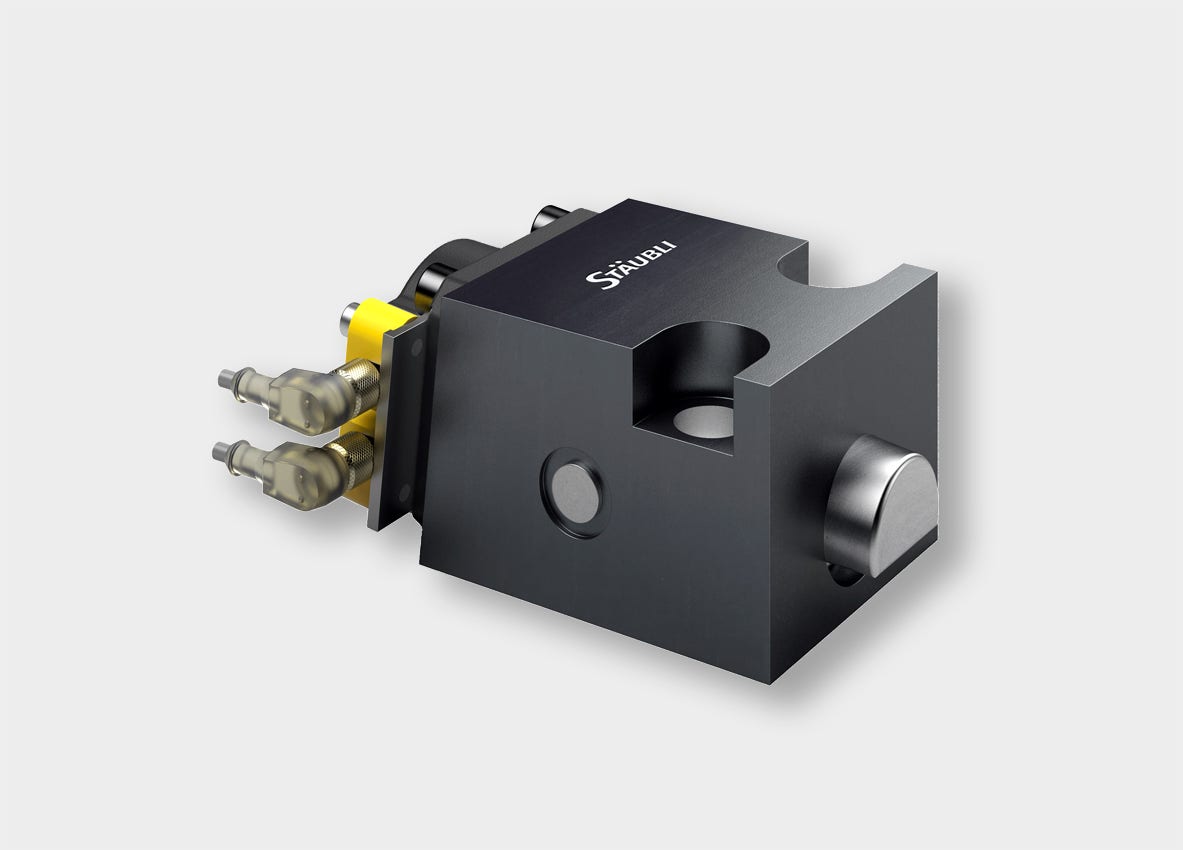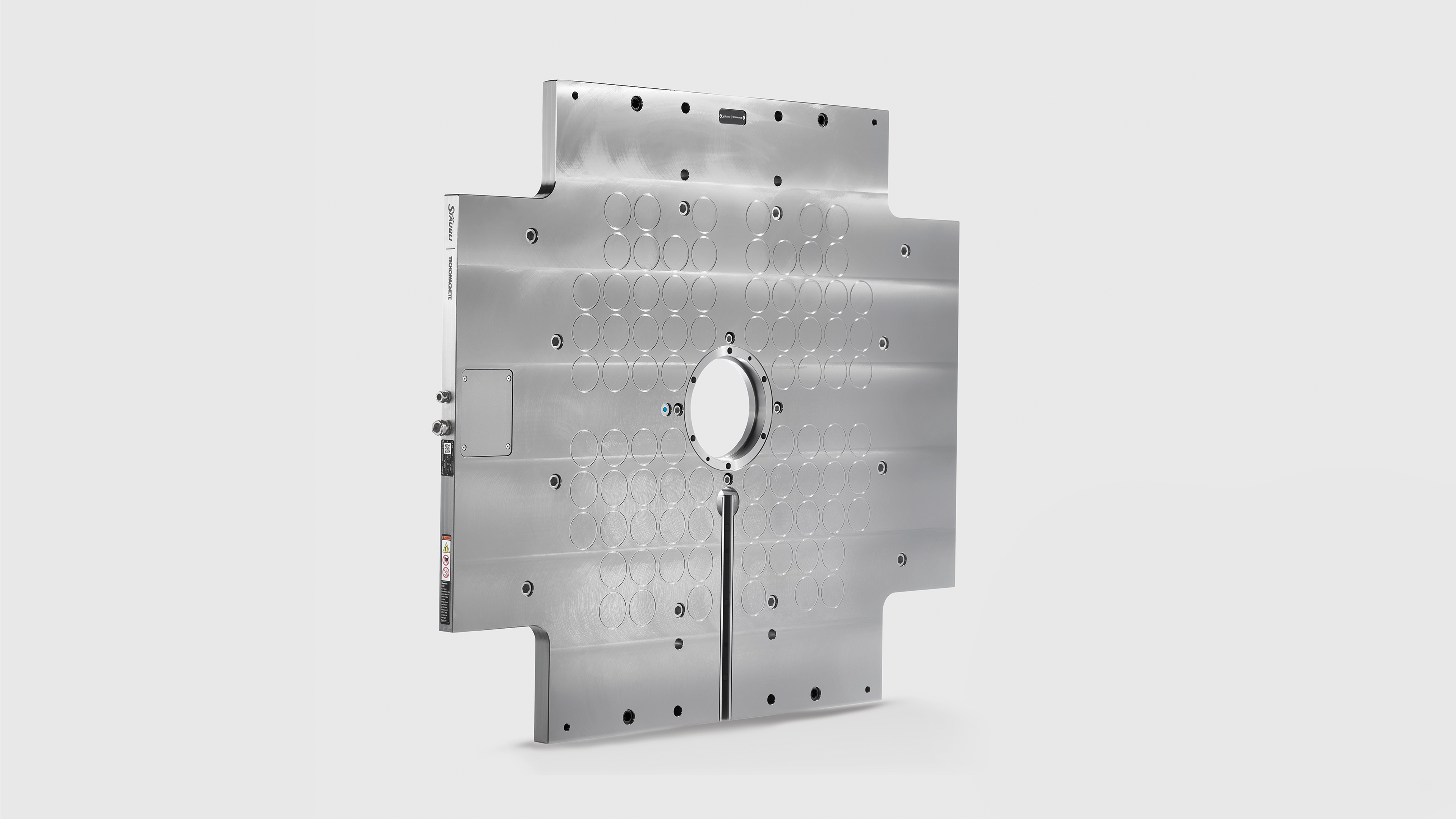- Europe
- Americas
- Asia and Middle East
- Africa and Oceania
April 2025
SUCCESS STORY
[India] - Magnetic clamping boosts productivity and safety levels
Shorter cycle times, lower mold costs and a high level of occupational safety in production are crucial to the success of industrial injection molding processes. Improving the mold changing process offers enormous potential here, as conventional methods are time-consuming, labor-intensive and risky.
A well-known manufacturer of electrical and digital building infrastructures in India approached us with this request. Based on the quick mold change systems already in use, Stäubli offered a magnetic clamping system customized to the specific application, improving operational efficiency, safety and ease of use.
Behind a smooth production process are efficient tool changing systems that are customized to the systems of each individual customer.
The challenge
Our customer, one of the largest manufacturers of electrical and digital building infrastructure, offers expert solutions for switches and switchgear in the low-voltage range and for sensors and data transmission. The offering is aimed at both private households and industrial customers, including data centers, which benefit from the customer's power distribution solutions.
A basis of trust
Our customer was looking for an easy-to-use product that would help reduce and simply manual work, as well as reduce physical strain. Previously, this replacement process required manual intervention using a torque spanner over a long period of time and the continuous use of an overhead crane.
The QMC 123 magnetic mold clamping system is ideal for combining temperature control and hydraulic circuits with additional Stäubli couplings and distributor modules.
Our customer had been relying on our quick coupling systems there for many years, and the QMC 123 mold magnetic clamping system - known for its ability to change tools particularly quickly using the SMED method (Single-Minute Exchange of Die) - was already being used successfully at some of the company's European sites. This is why the magnetic clamping system from Stäubli was chosen. To utilize the advantages of the technology and to find a holistic solution, the interconnection of temperature control and hydraulic circuits was also implemented using various Stäubli solutions such as RMI multi-couplings, EMI distributor modules, RPL and MPX quick-release couplings and flexible hoses.
Measurable results in the shortest possible time
Although there were only two months between the go-ahead and the planned project completion, the Stäubli team took up the challenge. They supported the local managers in the planning process for the customized systems and carried out the installation of the applications. In addition, appropriate training for the safe operation of the clamping systems was essential for the specialized personnel.
The work on the Euromap 70.0 interface was also exciting for the engineers. This standard defines how the connection between the injection molding machine and a mold magnetic clamping system must be made from a hardware point of view. To ensure compatibility at this interface, seamless coordination with the system manufacturer and the customer on site was required.
Innovation in step with improved working conditions
The use of the magnetic clamping system not only ensured greater efficiency in the processes. Employees also reported noticeably simplified and accelerated processes shortly after the project was completed, which contributed to increased job satisfaction.
The ergonomic and intuitive hand-held device of the QMC 123 not only simplifies manual work but also reduces physical strain.
Arun Koshy, Local Business Head - Plastic and QMC at Stäubli Tec Systems India, emphasizes an important point regarding operational safety: ‘In terms of safety and user-friendliness, we were able to add a key aspect: the option to visually check the correct clamping of the mold. This gives users the certainty that the clamping process has been carried out correctly.’
And the figures speak for themselves: since the start of the project, the efficiency of the systems has already increased by 11% and productivity has risen by around 9%. The measures have meant that the machines in question can operate for up to 600 hours longer per year.
Enabling future-proof solutions
The successful implementation in India is another example of the flexibility of Stäubli solutions to help our customers achieve their goals across different geographical zones. The system used enabled our customer to equip itself for developments in the area of Industry 4.0 and thus position itself more securely for the future. Among other things, this was achieved through optimized process automation and monitoring functions for data and security aspects.
Quick mold change systems
-

Hydraulic clamping
Compact and robust: hydraulic clamping system for automated tool change under harsh operating conditions. -

Mechanical clamping
Simple and safe: mechanical bayonet clamping system for safe tool clamping in one easy movement. -

Mold magnetic clamping QMC 123
Safe, innovative and fast: the magnetic technology is simple and requires no work on the mold. An ideal choice for frequent changes.